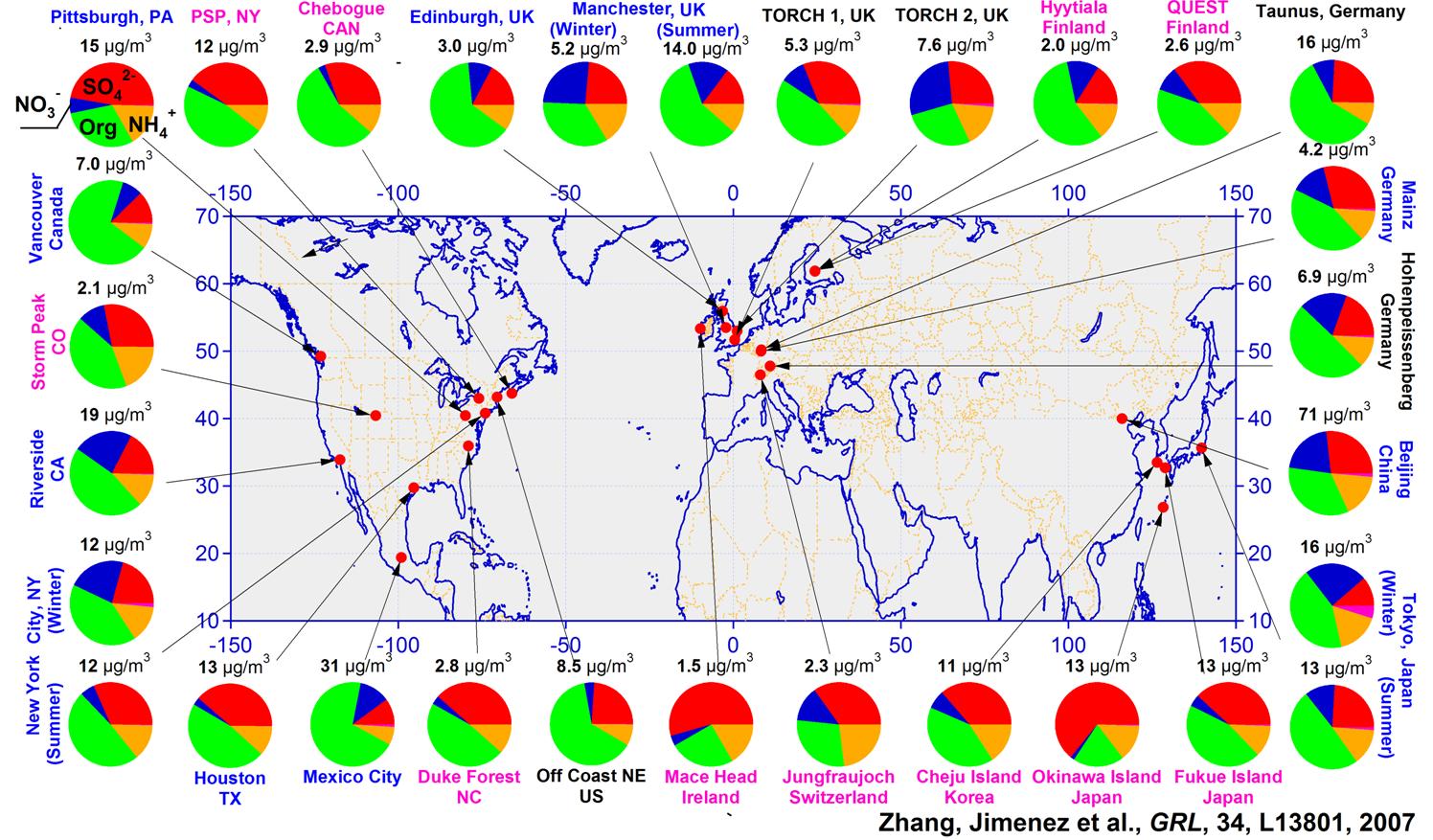The atmosphere is composed of a plethora of different gases in different amounts, and of particles, suspended in these gases (aerosols). Atmospheric composition may vary considerably depending on the area of the globe and the proximity to sources (natural and anthropogenic). Both atmospheric gases and particles may be directly emitted in the atmosphere from different sources (primary), or form from atmospheric processes (secondary). In particular, primary particles may consist of mineral dust, sea salt, carbonaceous aerosol, or be of biogenic origin. Depending on their size and chemical composition, atmospheric particles may act as cloud condensation nuclei (CCN) or as ice nuclei (IN), affecting climate and weather, penetrate in the human respiratory track, affecting health, or deposit on the earth and ocean, affecting ecosystems. Part of aerosols are characterized as “Primary Biological Aerosol Particles – PBAP), which are airborne particles of biological origin, including viable or nonviable microorganisms and reproductive or other cellular forms, shed or produced by bacteria, archae, fungi, plants, lichens etc. PBAPs play key role in genetic exchange between remote habitats and can cause adverse health effects and spread diseases not only to humans but also to flora and fauna.
In this context, APCG Atmospheric Composition focus area studies the variations in different types of aerosol and trace gases levels, in both urban and pristine environments. This research, combined with observations, data assimilation, and modeling, improves society’s ability to predict how future changes in atmospheric composition will affect climate, weather, and air quality.
Northern Hemisphere aerosol components

source: Zhang et al., 2007
Our activities include:
- In-situ aerosol composition by means of real-time monitoring of particulate matter (PM) fractions, on-line high resolution chemical speciation techniques and filter sampling followed by laboratory analysis, with emphasis on the main aerosol components such as organics, sulfate, ammonium, nitrate, elemental carbon and trace metals.
- Monitoring the levels of major gaseous species such as carbon monoxide (CO), nitrogen oxides (nitric oxide (NO) and nitrogen dioxide (NO2)), sulfur dioxide (SO2), ozone (O3) and Volatile Organic Compounds (VOCs) via both in situ and remote sensing techniques.
- Long-term monitoring of greenhouse gases (GHGs) such as carbon dioxide and methane, as major atmospheric components with direct impact on climate.
- Sampling bioaerosol (Primary Biological Aerosol Particles – PBAP) types (e.g. bacteria, spores, pollen, viruses, fungi) for is further analysis by PCR and sequencing to determine and identify DNA of the different taxa.
- Aerosol acidity (pH) estimates using established thermodynamic models in conjunction with in situ aerosol composition measurements. pH affects the solubility of hazardous components inside the human body and is thus a useful proxy for estimating health impacts from different aerosol components.
- Simulating the organic and inorganic atmospheric aerosol chemistry, using Eulerian numerical models in the global and regional scales.
- Studying changes in atmospheric composition during diverse environmental conditions i.e. intense pollution events (e.g. smog episodes, dust events, forest fires) and deciphering the natural from anthropogenic components.

